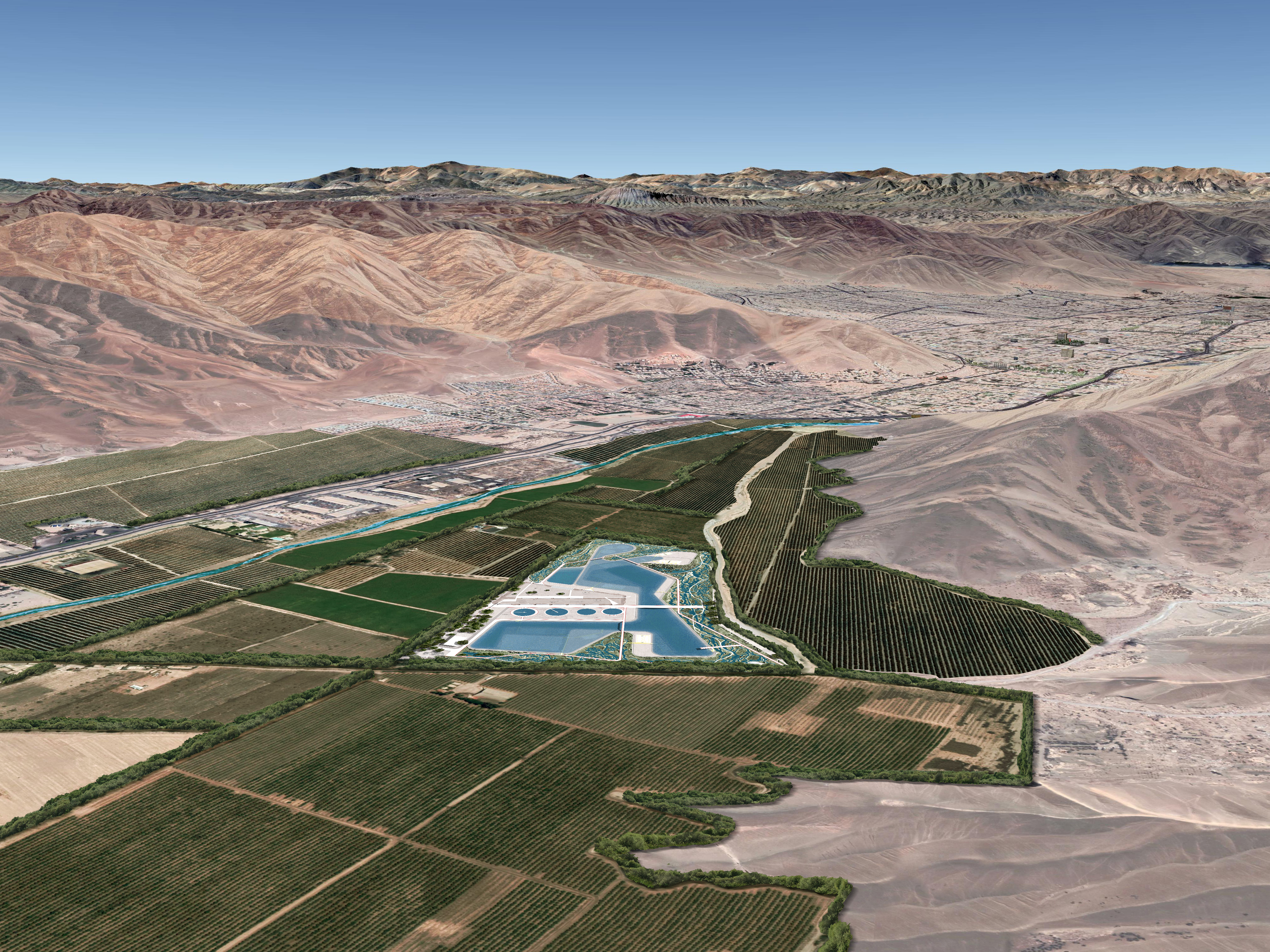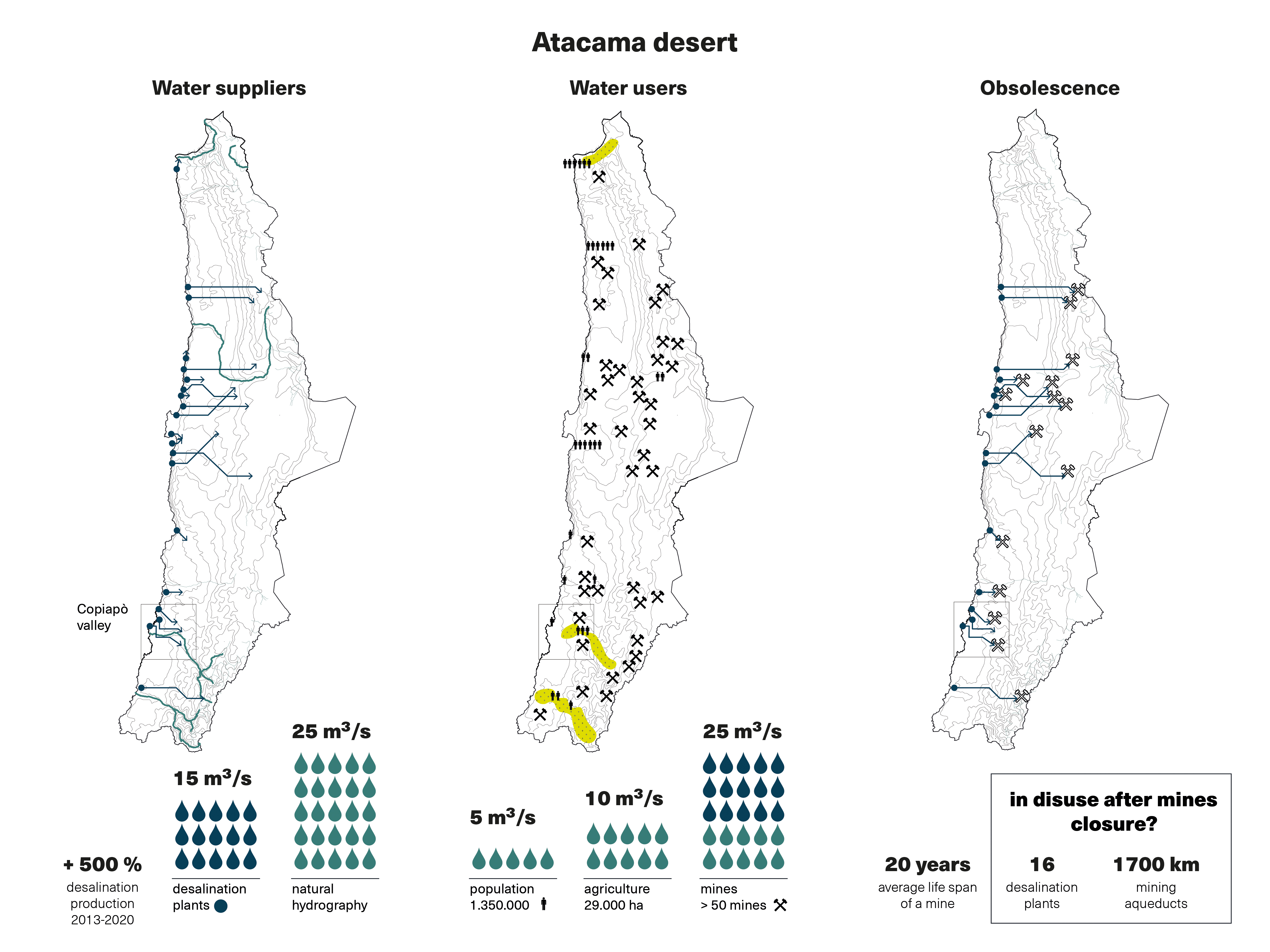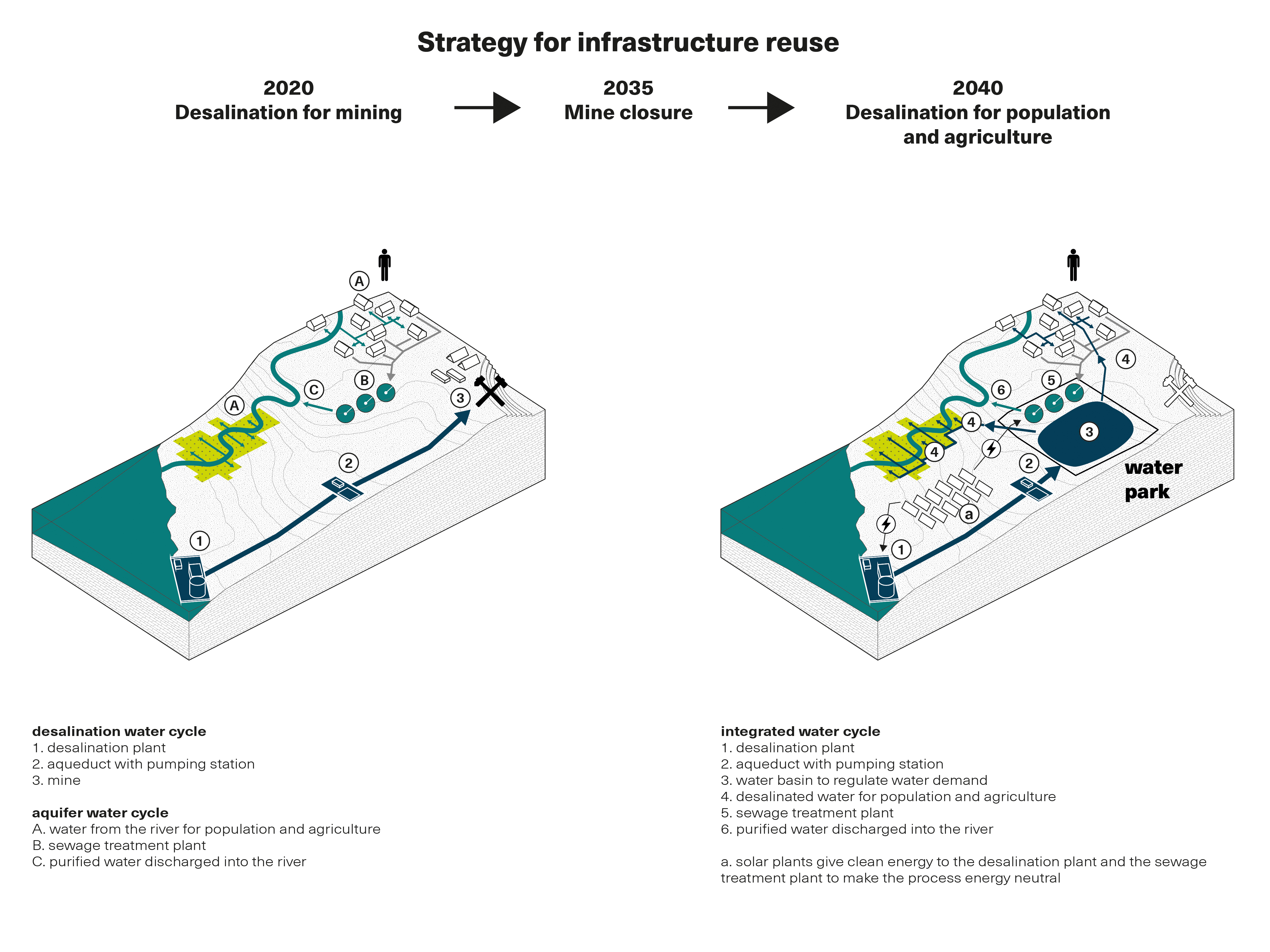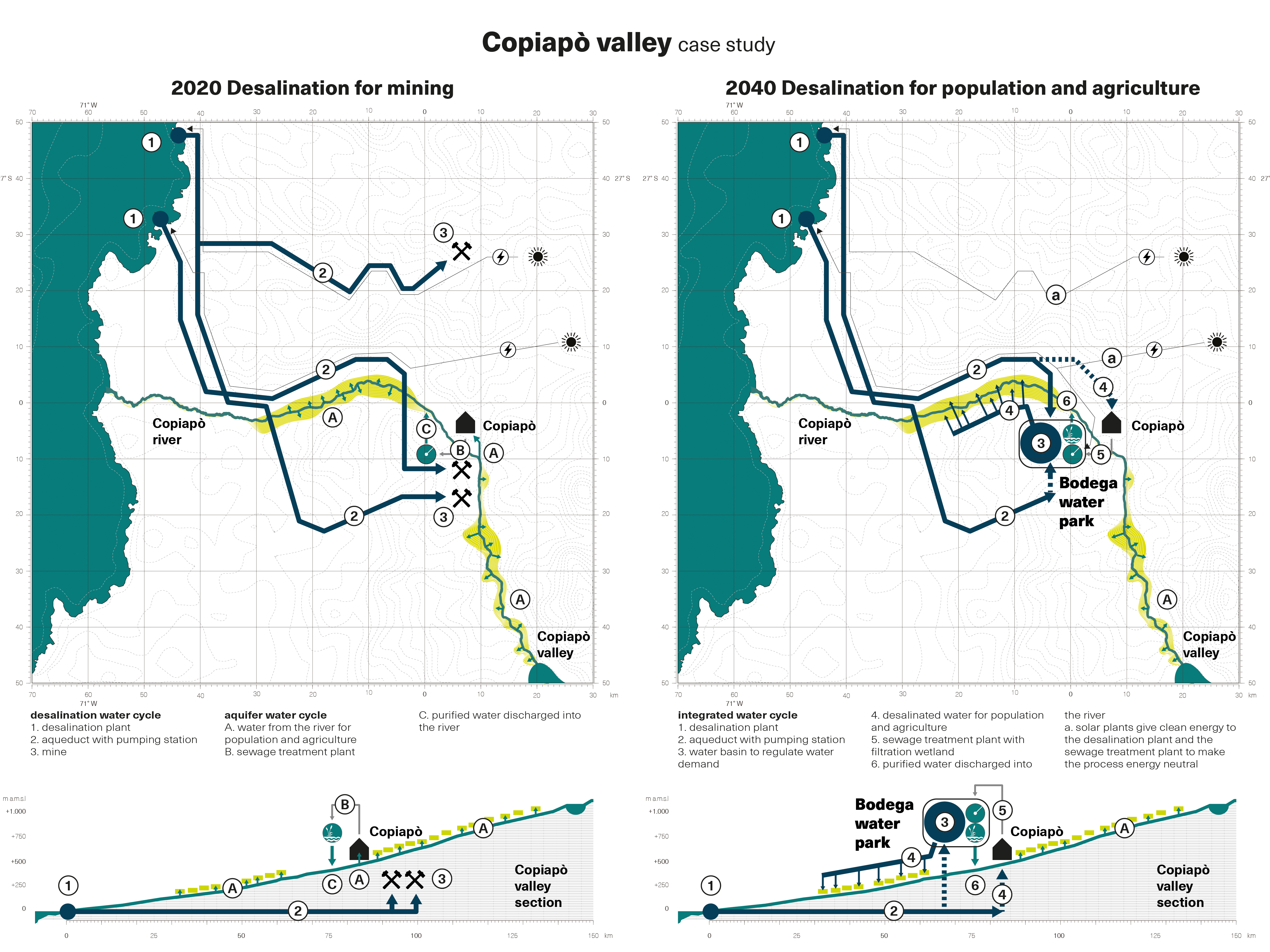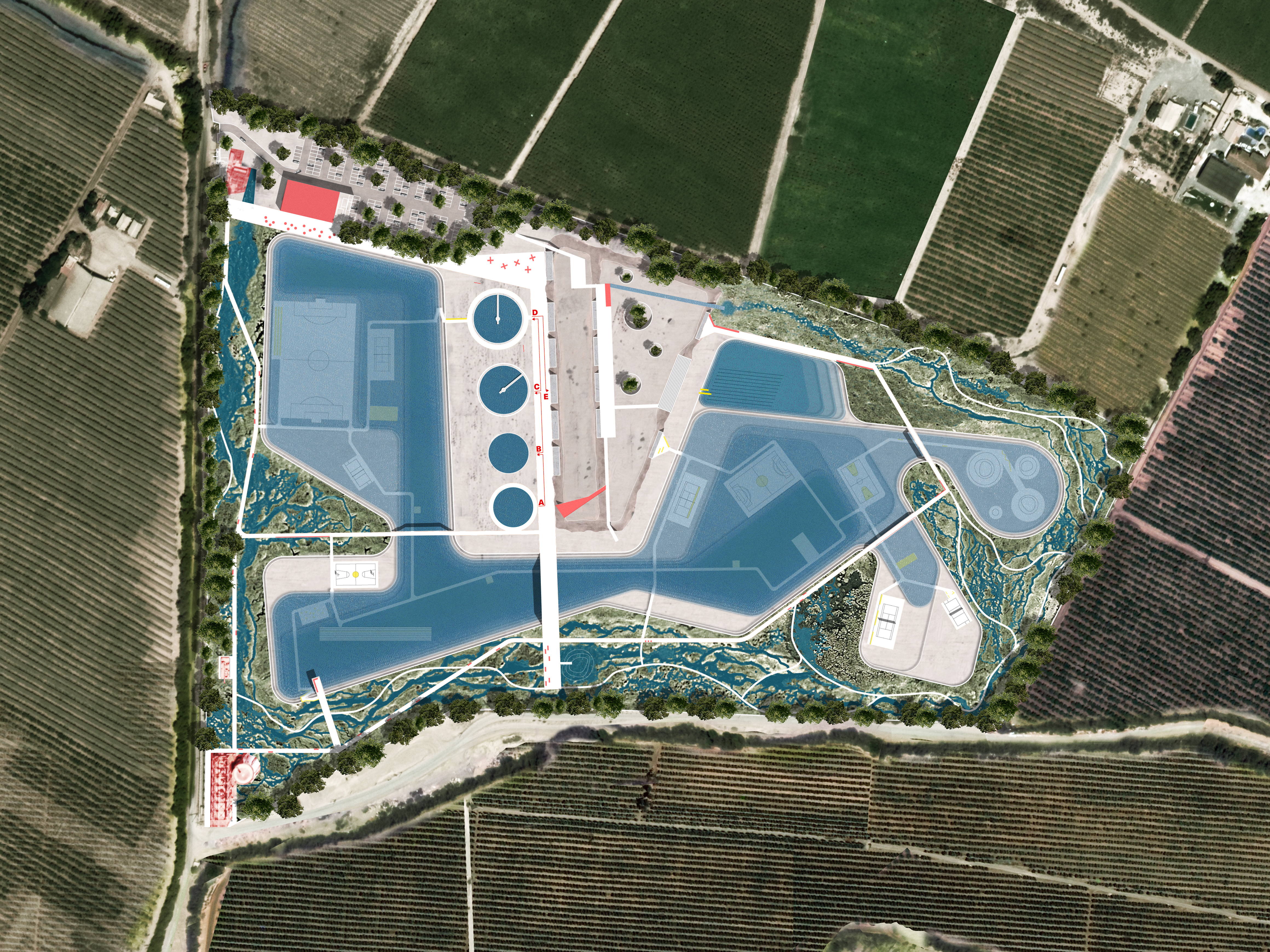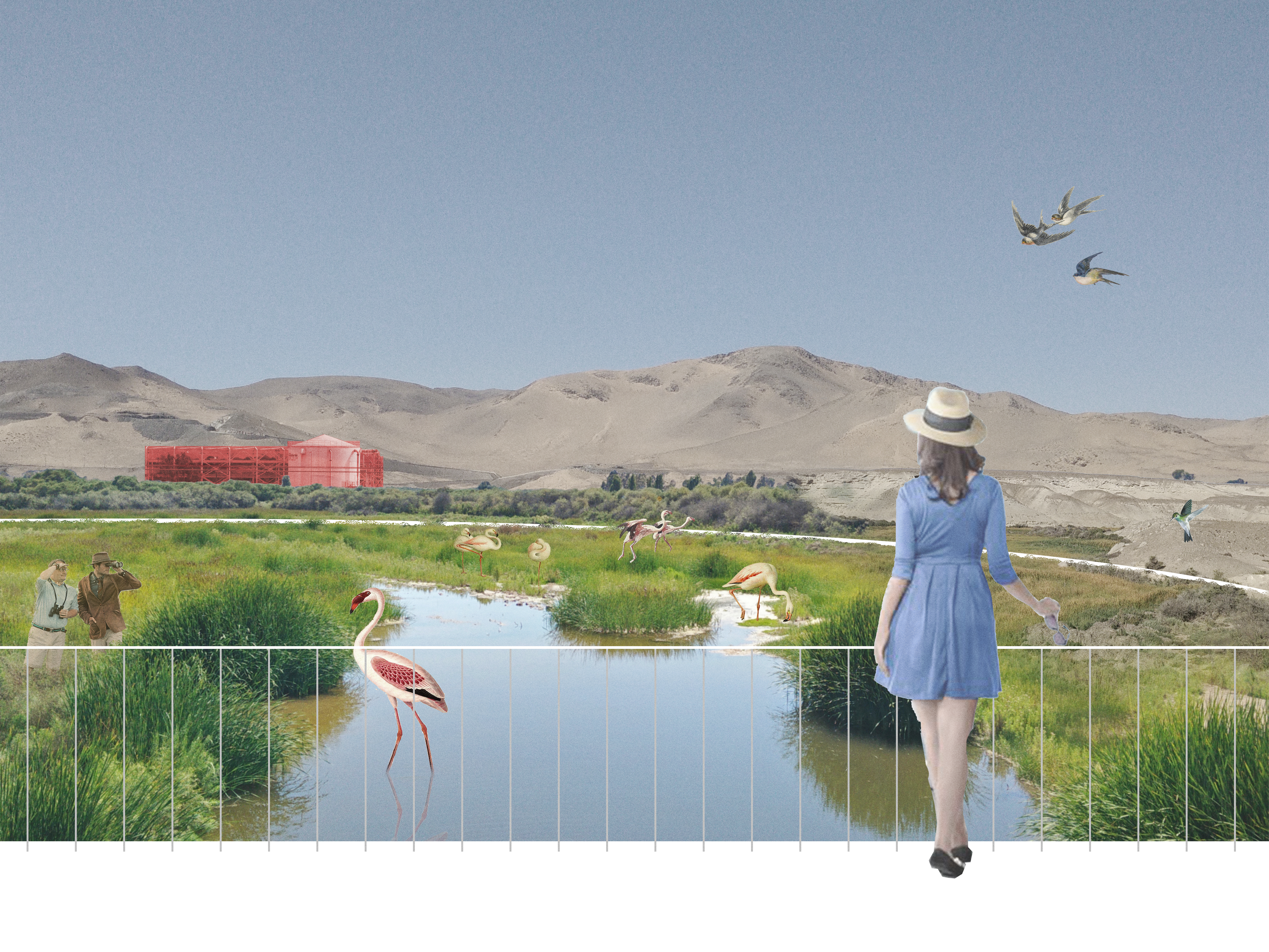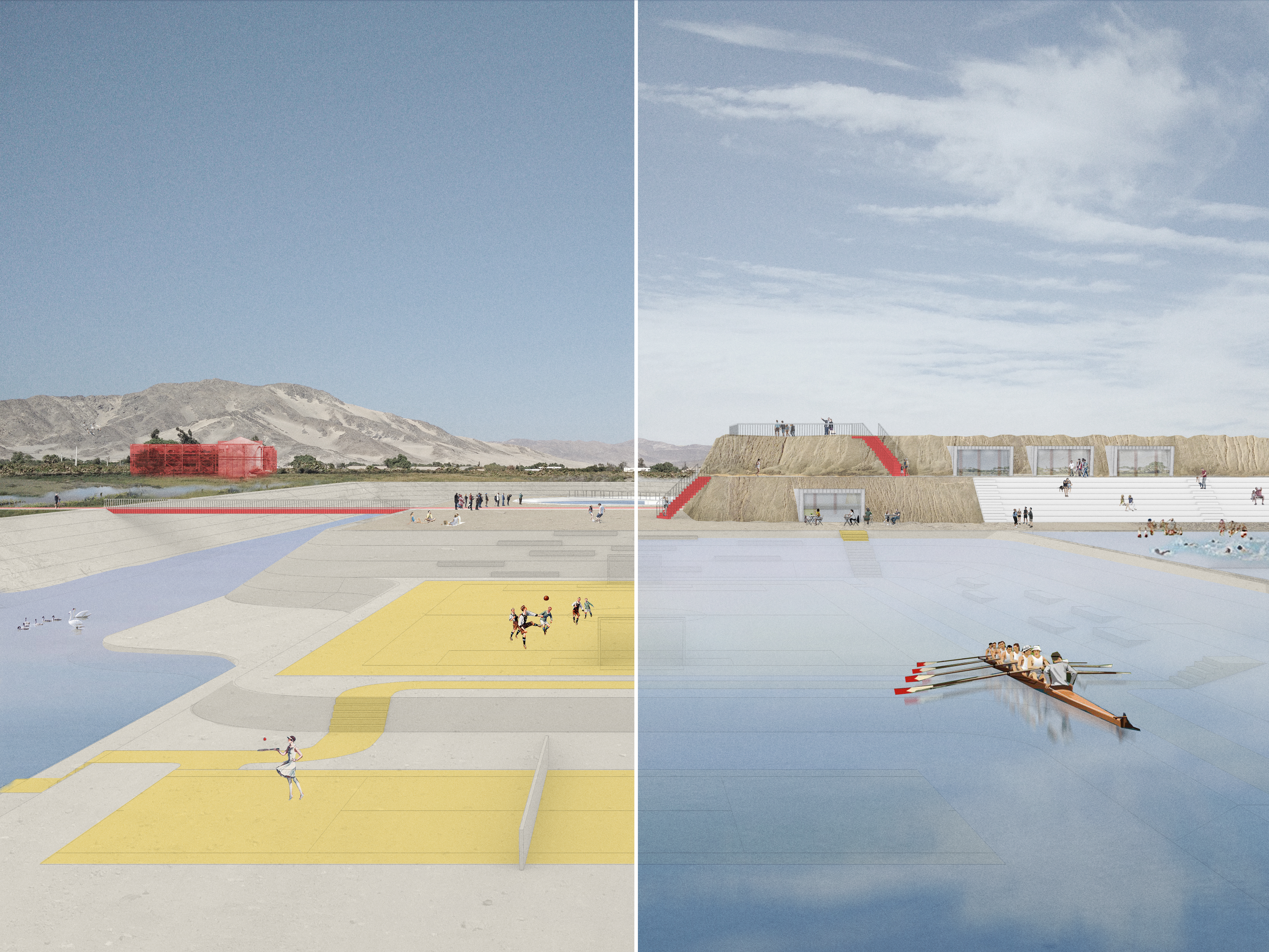AQUASTRUCTURA
Territorial
Copiapò, 2016
In collaboration with UMWELT
![]()
An alternative water infrastructure for the Atacama Desert
“If this is a desert, what are all these people doing here?”
– Reyner Banham
Aquastructura wants to analyze the impact of desalination process in Atacama Desert, in the North of Chile. Nowadays a large amount of desalination plants is built to supply water for copper extraction activity, as a possible solution to overcome fresh water shortage in the region. Large aqueducts are assembled to convey water from desalination plants near the sea to mine areas, which are even 4000 meters high, at a distance that reaches 190 kilometers. All these infrastructures are creating a new inverse artificial hydrography, in an environment which has a very limited water presence.
The Atacama desert is nowadays a complex system of
infrastructures which allow mining activities and humanpresence in a hostile environment. The lack of interaction
between different systems makes them vulnerable, their fate
is to become obsolete and abandoned in the desert.
Aquastructura integrates desalination as a part of the the
water supply in the Copiapò valley. The project aims at
preserving the natural water aquifer from excessiveexploitation, while providing a stable source of water for thepopulation and agriculture, the second largest source of
income in the area. It brings together different waterstakeholders (mining companies, water treatment company,
local government) into a unique entity which providesdesalted water and recycles the waste water from the city ofCopiapo, completing the water cycle. Reusing existing miningdesalination plants makes the construction of new watersystem feasible, while providing a future for infrastructures
which will lose their economic purpose when mine close.
![]()
Bodega water park is the center of the project. Here,
desalinated water is stored before distribution, to match
constant supply with fluctuating needs. The current,
mechanical treatment of wastewater is expanded with the
creation of a new wetland which naturally purifies water.
Industrial elements are designed to allow leisure and
educational activities letting the local population experience
the presence and the importance of water into the desert.
Water basins double their function as sport facilities. Wetlands
allow native vegetation to grow around the park: a natural
oasis for animals and visitors. The park is equipped with
educational elements providing knowledge about the
functioning of the new hydrologic system. Integration of
nature and infrastructure is the basis of the project.
